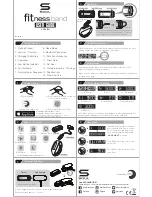
48
Introduction
Users of this dictionary will find it an effective tool for tackling practical linguistic tasks.
In designing this dictionary we have ensured that every entry provides as much
information as possible for each of the following users and tasks:
• the native English speaker trying to understand French,
• the native English speaker trying to write or speak French,
• the native French speaker trying to understand English,
• the native French speaker trying to write or speak English.
Users have different levels of skills and knowledge. For the advanced user, we
provide thorough coverage of up-to-date language. We include a wide range of
vocabulary in specialist but nonetheless highly topical areas such as business,
politics, sport, information technology, marketing, social administration, and the
environment. Advances in technology and the electronic information revolution are
reflected in this new edition, as are new developments in popular culture and
contemporary lifestyles.
For intermediate users, we have designed the dictionary to enable them to work with
the foreign language, using it correctly and well. Particular care has been taken in the
selection of the translations. Our electronic corpora give us a wealth of examples of
words in use in real, everyday circumstances. When one good translation has been
identified and checked in many contexts, it will often be given as the only general
translation for one sense of the headword. It has been our policy throughout to give
two or more translations only in those rare cases where they are consistently
interchangeable, and to avoid adding less safe alternatives when one equivalent is
adequate. Where appropriate, other equivalents, which have been found to work in
more restricted contexts, will be shown in examples.
Where nuances of meaning within a sense of the headword are translated in different
ways, these nuances are pinpointed by means of semantic indicators and/or typical
collocates. For a step-by-step guide to using this type of information to arrive at the
most suitable translation, see the section
Using this dictionary.
Translations given in isolation are, however, not enough to enable someone to work in
The Oxford-Hachette French Dictionary
Le Grand Dictionnaire Hachette-Oxford
a foreign language: grammatical constructions are also needed if the translation is to
be used correctly. For this reason, one of our principal concerns has been to include
these constructions wherever they are required. This is a significant feature of our
dictionary.
Headwords, compounds, idioms and phrasal verbs stand out clearly on the display
screen. English compounds are found in their proper place within the overall
alphabetical order of headwords. Phrasal verbs are given a very full and explicit
presentation which avoids ambiguous meta-language and, for the French user, shows
clearly the positioning of the noun object.
The dictionary has a wide coverage of North American as well as British English, and
exclusively British or North American usage is marked. Where appropriate, American
variants are given in translations of French words and phrases. The existence of
standard American spelling variants is indicated in translations in the French—
English side of the dictionary.
The needs of users extend beyond the bounds of individual dictionary entries. To
make this dictionary an effective aid for somebody working in a language not their
own, we offer access to the language in several different ways.
Notes on function words
The words of a language may be seen to be of two types: those with lexical meaning
like
table and slowly and jump, and those with function rather than meaning. The latter
are the joints and sinews of the language, uniting the other elements into sentences
which carry meaning. Examples of such function words are pronouns like
you and it,
verbs such as
be and have, and determiners such as this and that.
The notes within function word entries are again intended for use by the person
seeking to work in a foreign language. They provide basic information on grammatical
words.
The function word notes are easily identifiable in the dictionary. In cases where the
information can be presented fairly briefly, the note will be found at the top of the
entry, immediately under the headword. It can be accessed using the NOTE icon. In
cases where the necessary information is more lengthy and complex, the notes are
often broken up into several sections. These can be accessed using the several
NOTE icons.
Cultural notes
The dictionary incorporates a wide variety of cultural notes covering aspects of
PWE560_introOxford0729.pm65
07/29/2004, 10:44
48
Black
Содержание PW-E560
Страница 1: ......
Страница 28: ...g e nd l view after en mes by 04 7 29 10 30 AM ...
Страница 49: ...47 altung 07 29 2004 10 44 ...
Страница 54: ...e end of tion erm 07 29 2004 10 44 ...
Страница 60: ...07 29 2004 10 44 ...
Страница 90: ...u haitez sur r e ceux de du ère 10 fois 07 29 2004 10 38 ...
Страница 98: ...07 29 2004 10 38 ...
Страница 100: ......
















































